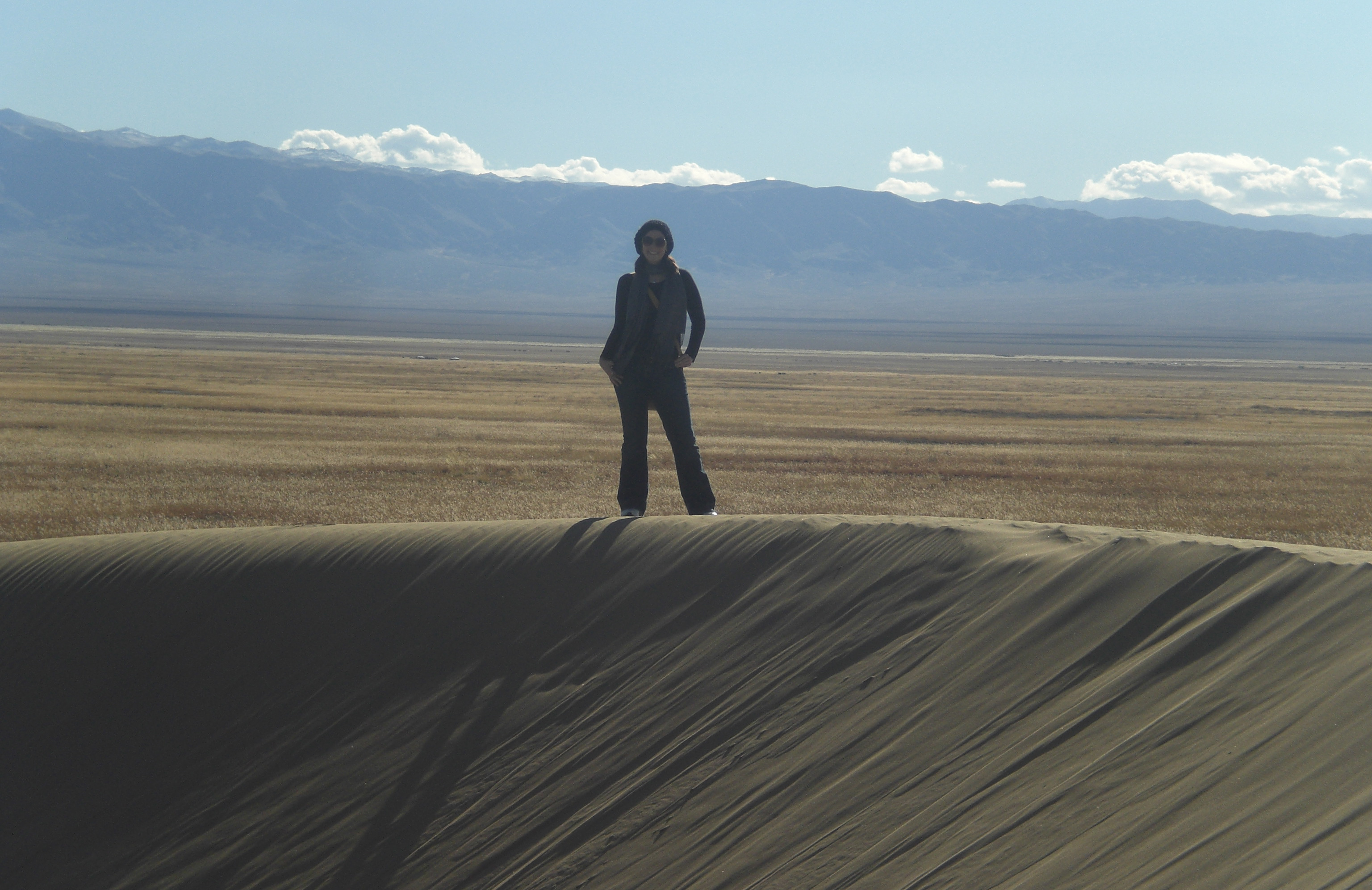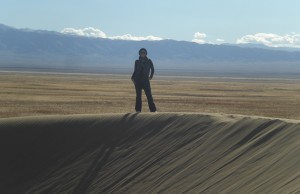Alyssa Vorhies (’09) gives an insider’s view of her Peace Corps experience living in one of the most sparsely populated countries in the world.
For many people across the United States, a kitchen without a microwave; a town without Internet or cellphone service; a state without roads; and a home without a shower, hot water or even running water seem unimaginable; but for me it was just another day in a place I called home. This unfathomable world, this place, this country, was my home in Mongolia during my two years as a volunteer in the United States Peace Corps.
I could write for days about the interesting culture, the temperatures that (not uncommonly) hit averages of -40 degrees Fahrenheit in the winter, the struggles that come with a language barrier, the travel snafus and painfully long rides over open unpaved land . . . but today I will write instead about something as simple as a shower.
In Mongolia there are primarily three types of housing: apartments, wooden houses and gers (also commonly referred to in Western nations as yurts—sturdy round tents serving as a home for nomadic cultures). Wooden houses and gers virtually never have running water; typically apartments have running water, but no shower or water heater.
I spent my first three months in Mongolia living in a ger during training. I, of course, did not have running water and would take water from the well in a large barrel and then wheel it to my ger. After the first three months, I moved into an apartment for the remainder of my service. There I had ice-cold running water, a sink and a toilet, but no tub or shower. The town in which I trained did not have a shower house, and the town where I spent the remainder of my service had a shower house, but it was often closed or not working, so I spent the first six months of my service boiling water over a fire or stove, pouring it into a round bucket/basin called a tumpon and sponge bathing.
I can only compare the feeling of tumpon bathing to swimming on a cool summer night, meaning that while the water may be warm, as soon as you are no longer submerged and your wet skin is exposed to the air, you are freezing. This is how the entirety of a tumpon bath feels: wet skin, warm water, cold air.
Halfway through my first winter, the shower house in my province began working, and I decided to forego the misery of the tumpon bath. I turned to the shower house for my weekly shower. Yes, you read that correctly, weekly shower. Volunteers without showers commonly turn to showering once per week (or sometimes less) due to its difficulty. Do not mistake me, we maintain hygiene, we freshen up between, we wash our hair, but as for a full-on shower, it is common for a volunteer to trek to the shower house only about three to four times a month.
While a trip to the shower house is a full shower, it is still the furthest thing from an enjoyable experience. Imagine bundling up in all of the layers you own. After all, it is -40 degrees outside, and you are about to take a walk across town. So, you put on your obligatory three pairs of pants, three shirts, jacket, winter coat, ear muffs and hat, gloves, scarf and boots and head out the door on a 15-minute walk. Upon arriving at the shower house, located in a dark, deteriorating basement of a store, you join 20 other Mongolians on a bench to wait your turn. This can take hours.
Finally, it is your turn; you pay your money and are taken to your room. You are then locked in from the outside and become concerned that one of two things will happen: either someone will open the door prematurely to your room while you are mid-scrub or you will knock when you are finished and no one will hear you. The entire room is small and wet and dimly lit by a lone light-bulb swinging from a splitting wire.
Now you must perform your first set of ‘shower acrobatics’ and attempt to remove your clothing without letting any part of your clothes touch the floor or walls—balancing on one foot at a time, you tug at layer after layer of clothing. Then, the shower begins. The water might be hot, but likely it is lukewarm or even more likely room temperature. The water might have decent pressure, but likely it is a trickle, and it is definitely not going to be high-pressured. The floor is made of slippery tile so you constantly battle to keep your footing.
Finally, you are finished with your shower, and the time has come for you to redress, but the entire room is wet. You have to put your clothes back on, while never letting your pant legs touch the floor—and, you are not doing this for one layer of clothing, but rather for three. Once dressed, you stand at the door and pound, and pound, and pound until a worker comes and lets you out. Then with cold, wet hair, you head back out into the -40 degree weather to walk the 15-minute trek home.
Through my time in the Peace Corps, I learned many lessons of appreciation, patience, cultural understanding and more; and I feel confident that the lesson to appreciate a warm shower will continue to stay with me during my stateside life.



